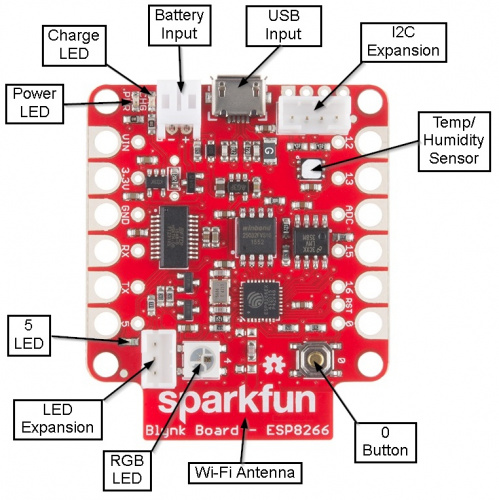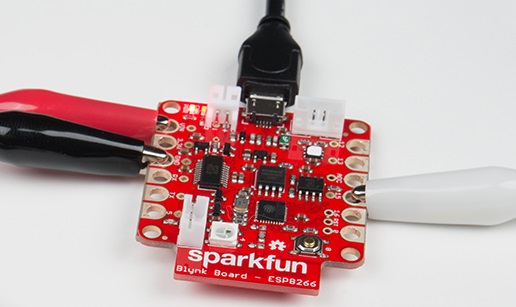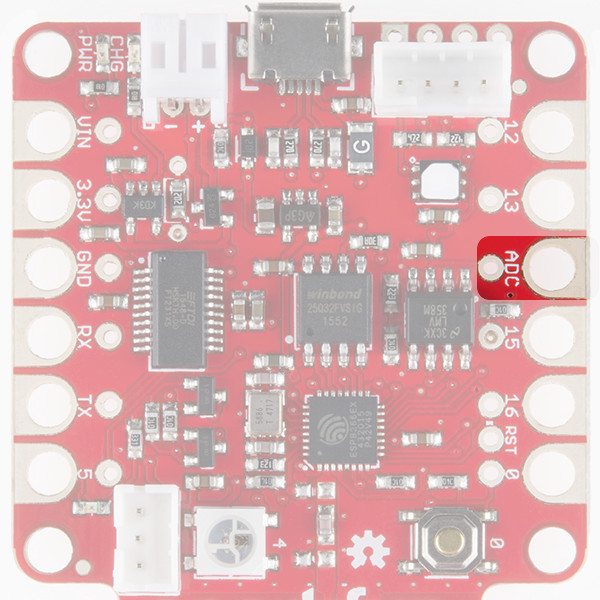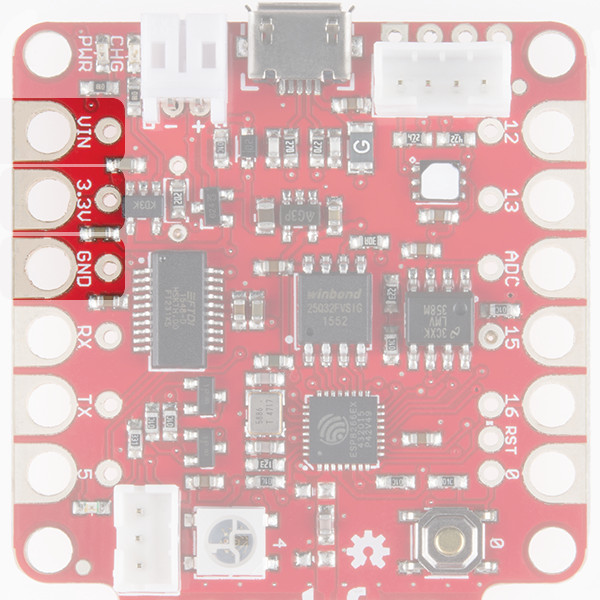Blynk Board Project Guide
Blynk Board Overview
You're probably already familiar with the most important Blynk Board component -- the shiny RGB LED -- but there's a whole lot more included with the board. Throughout these projects you'll explore everything the Blynk Board has to offer, but here's a quick overview:
Meet the Blynk Board Pins
The Blynk Board interfaces with the outside world using input/ouput (I/O) "pins" -- tiny "fingers" that can either control real-world objects, like motors or LEDs, or read in values from sensors (for example light or position).
Each of the Blynk Board's pins are accessible via the large, metal-encircled holes on the edge of the board. These large holes are designed to interface with alligator clip cables -- a staple interface cable for beginner and advanced electrical engineers alike.
Each of the Blynk Board alligator-clippable-pins are labeled with white text towards the center of the board. The Blynk Board pins can be broken down into a few categories: general-purpose (GP), analog input, and power output.
General Purpose Input/Output (GPIO) Pins
There are eight "general-purpose" input/output (GPIO) pins. These are the "worker-bees" to the Blynk Board's main processor "queen". You can use them to control outputs -- like LEDs or motors -- or as inputs, gathering data from buttons, switches, encoders, and more.
| Pin Label | Notes |
|---|---|
| 12 | Input or PWM-capable output. |
| 13 | Input or PWM-capable output. |
| 15 | Input or PWM-capable output (pull-down resistor). |
| 16 | Input (internal pull-down resistor). |
| 0 | Input; connected to on-board button. |
| 5 | Output; connected to on-board LED. |
We recommend against using the RX and TX pins unless you really need them, but the rest are free for interfacing with the rest of the world as you desire!
Analog Input (ADC) Pin
A very special pin labeled "ADC" sports the Blynk Board's analog-to-digital converter (ADC). This pin translates analog voltages to the digital 1's and 0's a computer can understand.
This pin is mostly used to read the values of real-world sensors -- you can connect it to light sensors, motion sensors, flex sensors, and all sorts of other physical-world-sensing electronic components.
Power Outputs
In addition to the Blynk Board's I/O pins, the power rails are also broken out to alligator-clip pins. These are the pins labeled "VIN", "3.3V", and "GND".
You'll get very accustomed to using these pins -- especially the ground pin. They have all sorts of uses -- ranging from powering motors to providing a reference voltage for a potentiometer.



